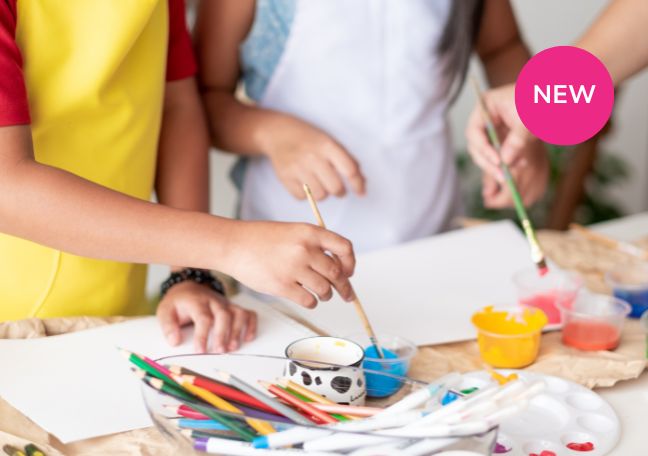Lesson summary
Students will reflect on their environmental impact and collaborate with their peers to design and create a banner promoting participation in Earth Hour.
Learning intentions:
Students will...
- understand the concept of Earth Hour.
Success criteria:
Students can...
- explore their environmental impact
- collaborate to create an Earth Hour banner.
Lesson guides and printables
Curriculum links
Select your curriculum from the options below.
Lesson details
Skills
This lesson is designed to build students’ competencies in the following skills:
- creative thinking
- critical thinking
- collaboration
- communication
- community engagement
- global citizenship
Curriculum Mapping
Australian Curriculum (v9.0) content description:
Foundation, Visual Arts
- create arts works that communicate ideas (AC9AVAFC01)
- share their arts works with audiences (AC9AVAFP01).
Year 1 and 2, Visual Arts
- use visual conventions, visual arts processes and materials to create artworks (AC9AVA2C01)
- share artworks and/or visual arts practice in informal settings (AC9AVA2P01).
Relevant parts of Foundation achievement standards: Students use play, imagination, arts knowledge, processes and/or skills to create and share arts works in different forms.
Relevant parts of Year 1 and 2 achievement standards: Students create arts works in a range of forms. They share their work in informal settings.
NSW Syllabus outcomes:
- makes artworks in a particular way about experiences of real and imaginary things (VAS1.1)
- uses the forms to make artworks according to varying requirements (VAS 1.2)
General capabilities: Critical and Creative Thinking, Ethical Understanding, Literacy, Personal and Social Capability
Cross-curriculum priority: Sustainability
Level of teacher scaffolding: High - support students in effective collaboration when creating and designing their banners.
UN Sustainable Development Goals
UN SDG 13: Take urgent action to combat climate change and its impacts
- Target 13.3: Improve education, awareness-raising and human and institutional capacity on climate change mitigation, adaptation, impact reduction and early warning.
Resources Required
- Banner (fabric or poster board)
- Device capable of displaying audiovisual material
- If using fabric, use canvas fabric, fabric markers and/or paint
- If using poster board, use rulers, markers, pencils, and crayons.
Additional Info
Earth Hour is a WWF-Australia initiative and the world’s largest community-driven climate change campaign. At the centre of Earth Hour is switching off lights to show a commitment to action. Thousands of educators use Earth Hour’s education program to enrich their curriculum and provide pathways for young people to create change in their world. For the most up-to-date Earth Hour dates, times, and events, check here.
Related Professional Learning
Using The Cool.org Act Framework in the Classroom - Primary
Quick Summary: This course will help you empower students to take action on issues that are important to them by offering a variety of strategies and tactics to facilitate meaningful action.
Using The Cool.org Hope Framework In The Classroom - Primary
Quick Summary: This course will provide strategies and tactics for adopting a hopeful mindset when exposing students to upsetting issues when exploring real-world topics in the classroom.


Welcome back!
Don't have an account yet?
Log in with:
Create your free Cool.org account.
Many of our resources are free, with an option to upgrade to Cool+ for premium content.
Already have an account?
Sign up with:
By signing up you accept Cool.org's Terms and Conditions(Opens in new tab) and Privacy Policy(Opens in new tab).